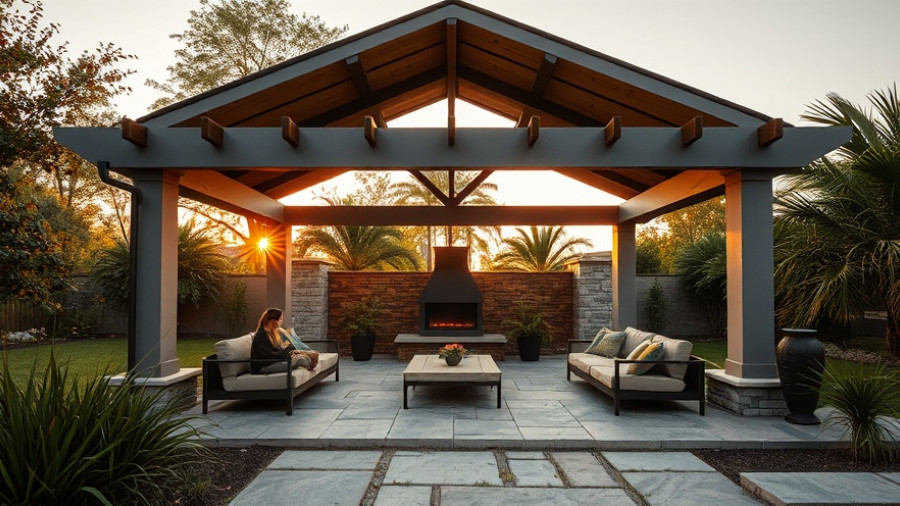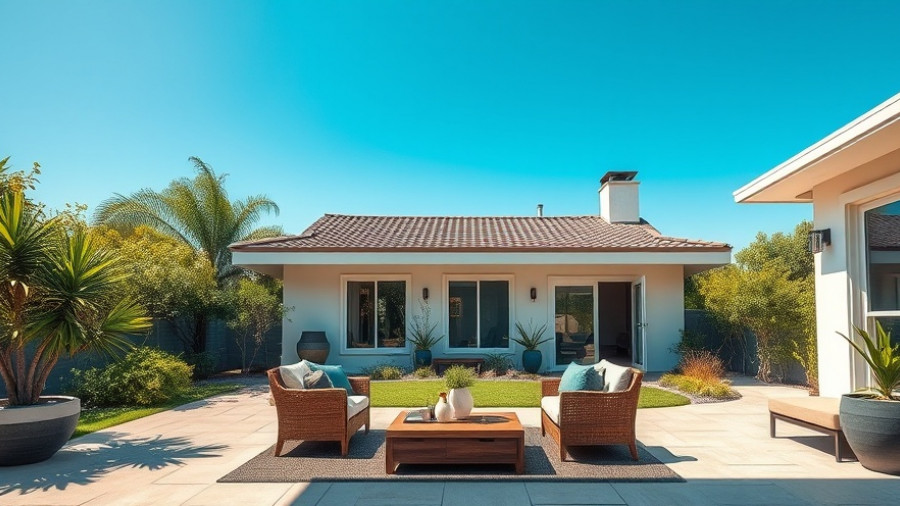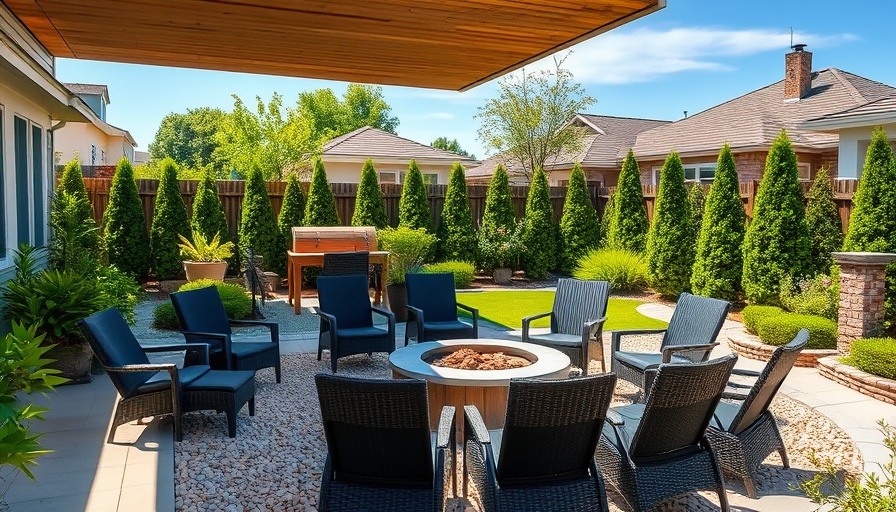
Beat the Heat: Top Tips for Adding Shade to Your Yard
As summer approaches, most homeowners in sunny regions like California are on the lookout for ways to enjoy their outdoor spaces without melting under the sun. Thankfully, landscape experts recommend various solutions for creating shade in your yard, combining aesthetics with comfort. From umbrellas to trees, you can find an ideal mix to enhance your outdoor living experience.
Quick Fixes for Instant Comfort
When it comes to immediate shade solutions, landscape consultant Tim Zarra highlights the simplicity and effectiveness of large umbrellas or shade sails. They can be easily repositioned and paired with other shade sources, providing flexibility as the sun moves throughout the day. For example, at a home in Washington, a cantilever umbrella was strategically placed in the patio area to create comfortable seating without obstructing views.
Long-Term Solutions: Pergolas and Shade Structures
If you're looking for a more permanent option, consider constructing a pergola or similar outdoor structure. These can provide substantial shade while also adding an architectural element to your garden. A well-placed pergola can create a comfortable nook for dining or relaxation, making outdoor living more appealing. Integrating climbing plants such as vines can offer additional shade over time and enhances the beauty of your yard.
The Value of Shade Trees
Perhaps the best long-term investment is planting mature shade trees. Not only do they offer cooling relief on hot days, but they also improve your property's aesthetic and increase its value. Trees provide natural habitats for birds and other wildlife, contributing to the local ecosystem. When selecting a tree, consider various species that thrive in your climate to ensure success and massive shade coverage in the future.
Combining Elements for Optimal Shade
The experts urge homeowners to take a blended approach. Combining instant fix solutions like umbrellas with structural elements like pergolas and mature trees leads to maximum shade efficiency. For optimal effects, position these shade-providing elements where the sun hits hardest and create a comfortable outdoor oasis.
Common Mistakes to Avoid
It’s easy to overlook specific factors while planning for shade in your yard. One major pitfall is not considering the longevity of growth. Planting trees that may outgrow their space can become problematic in the long run. To avoid this, consult with local horticulturists who can provide guidelines on tree size and growth patterns.
Enhancing Outdoor Aesthetics Beyond Shade
Don’t forget that adding shade elements can also enhance your yard's aesthetics. Choose colors and materials for your umbrellas and furniture that complement your home’s style. Integrating lighting under a pergola or around shaded areas can create a cozy atmosphere for evening gatherings.
Future Predictions: The Trend of Eco-Friendly Landscaping
As our understanding of climate change deepens and sustainability takes the forefront of home and garden design, the trend is leaning towards eco-friendly landscaping. More homeowners are expected to invest in trees and sustainable shade structures that not only serve immediate comfort but also benefit the environment long-term.
As you consider how to enhance your outdoor living space, take the reviews and experiences of landscape professionals to heart. By understanding the myriad ways to introduce shade into your yard, you’ll be better prepared to create an inviting, stylish, and functional outdoor area.
The next time you’re basking in the midday sun, think about how these shade solutions can transform your backyard sanctuary into a comfortable retreat.
 Add Row
Add Row  Add
Add 




Write A Comment